Attacking Chess: Complete Guide
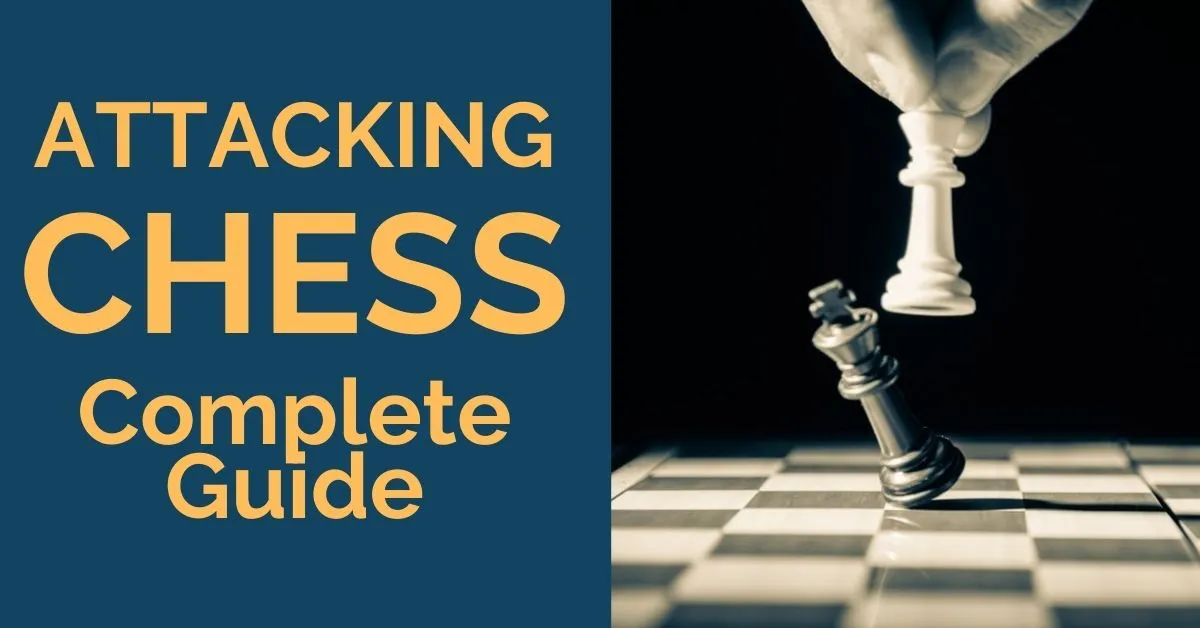
The attack is one of the most beautiful and interesting aspects of chess. It is also a skill that everyone can and should master to improve at chess.
Many rules could help with that. First of all, you should always remember the attack has to be energetic and fast. That is why different sacrifices become so powerful. It often comes as a trade of material for time and helps to speed up the invasion.
In this article, we will examine different rules and techniques that could help you build attacks in practical games. For convenience, the material is divided depending on kings’ positions.
Attacking Chess – King in the Center
Usually, the most dangerous place for a king is the center. That is why beginners are always advised to castle as early as possible. Yet, we see even grandmasters skipping castling and getting crushed in the center quite often. Do they not know the very basics?
Of course, they know all of that. Chess is a complex game and there are many exceptions to the rules. Sometimes the grandmasters think they can delay castling for a bit and do some more important things.
Sometimes, the position looks closed and it feels like the king is safe in the center. This approach is risky but often pays off well. Below, we will see the situations when it backfires and how to punish delaying castling.
Paul Keres – Vladas Mikenas
6th Soviet Team Cup Riga URS (6), 17.12.1968
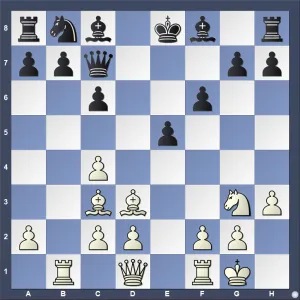
This position was seen in one of the games of the legendary Paul Keres. White has a tremendous lead in development. Black’s king is still in the center.
Paul Keres knew exactly what to do in such situations: open up the position!
14.f4! Black’s pawn chain was limiting White’s pieces and shielding the king. White demolishes it and Black is hopeless.
14… Be6 If Black tried to castle kingside, White was still winning after 14…Bc5+ 15.Kh1 0–0 16.fxe5 fxe5 17.Qh5+–.
15.fxe5 Nd7 16.exf6 Qxg3 17.fxg7 Bc5+ 18.Kh1 Rg8 19.Qe1, and soon White won. You can see the whole game in the PGN-viewer below.
In the next game, the situation was more complicated.
Paul Keres – Istvan Bilek
Leipzig ol (Men) fin-A Leipzig GDR (4), 31.10.1960
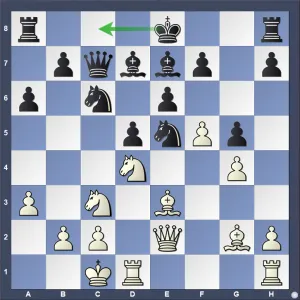
In this position, Black is a pawn up, but their king is in the center. If White plays too slowly here, Black will castle queenside and escape from troubles. Here Paul Keres follows another rule: prevent the king from escaping.
15.Bxd5! Sacrificing the bishop to open central files. Now Black doesn’t have time to castle. 15…exd5 16.Nxd5 Qd6 17.Nxc6 Bxc6 18.Bc5 Qxc5 19.Qxe5
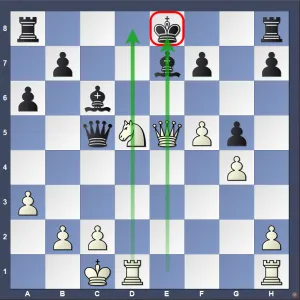
All the files are opened. Black’s position is hopeless. See the rest of the game in the PGN-viewer below.
Attacking Chess – Opposite-Side Castling
In the previous examples, one side tried to attack while the other side was only hoping to survive. The games with opposite-side castles are much sharper than that. Here both sides try to attack each other and get to the enemy king as quickly as possible. Such positions require energetic moves and often involve sacrifices.
Open files are still important here. The most common strategy to open up the enemy king is to pawn storm its position.
Akiba Rubinstein – Richard Teichmann
Mch Vienna AUH (4), 07.05.1908
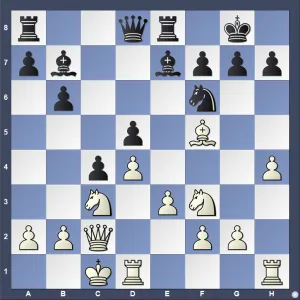
14.g4! White starts pawn storming. The main goal is to open up the position of Black’s king. 14…Bd6 15.g5 Ne4 16.h5 Qe7 17.Rdg1 a6
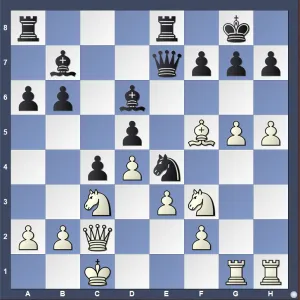
Black prepares the pawn storm as well but it is too late. White won the race.
18.Bxh7+! This piece sacrifice speeds up the attack. White won a beautiful game. You can see the rest of it in the PGN-viewer below.
A similar idea was used in the following game.
Viswanathan Anand – Kiril Ninov
Wch U20 City of Baguio PHI, 07.1987
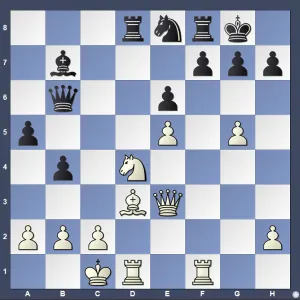
21.Bxh7+! Kxh7 22.g6+ Kg8 23.Qh3 Nf6 24.exf6 fxg6 25.fxg7, and Black resigned.
Sometimes pawns help pieces to attack tactically.
Sergei Movsesian – Ognjen Cvitan
Bundesliga 1997/98 Germany, 1997
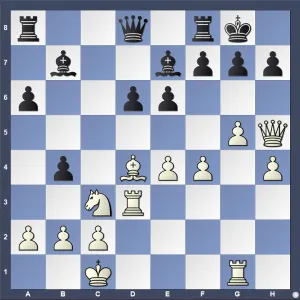
If White retreats the knight, Black’s bishop gets access to the e4-square. From there it will not only attack the c2-pawn but also defend Black’s king.
17.Nd5! The typical idea in the Sicilian Defense. This move prevents the bishop from appearing on e4 and deprives Black of the …e6-e5 defensive pawn push. 17…exd5 Now the bishop on d4 is dominant. 18.Rdg3 Qc7
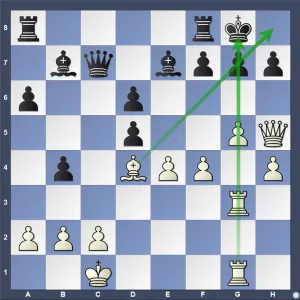
White’s pieces are pointed towards Black’s king. The only thing that keeps Black’s king alive so far is the pawn on g5. But a little nuance turns even this in White’s favor: 19.Qh6! After this brilliant move, Black is absolutely lost.
The pawn storm reaches the goal faster when there are pawn hooks in the enemy position.
Robert James Fischer – Sharav Purevzhav
Varna ol (Men) qual-B Varna BUL (1), 18.09.1962
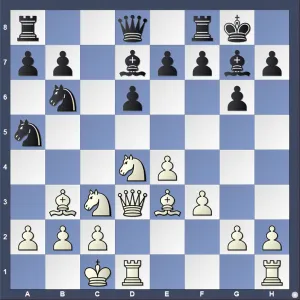
This position comes from the Dragon Variation of the Sicilian Defense. This variation is considered risky for Black because the g6-pawn can be used as a hook and help White open up the position. 13.h4 Using the g6–pawn as a hook to open up the h-file.
13…Rc8 14.h5 Only two moves by a pawn and the file is ready to get opened. 14…Nbc4 15.hxg6 hxg6 16.Bh6 Trading the only piece that protects the king. This is another important attacking concept everyone should be aware of.
16…e6 17.f4 Now the queen is ready to join the rook at the h-file.

17…e5 18.Nf5! Bxf5 19.exf5, and soon White won.
The same attacking idea has worked for Fischer against a much stronger opponent as well.
Robert James Fischer – Bent Larsen
Portoroz Interzonal Portoroz SLO (8), 16.08.1958
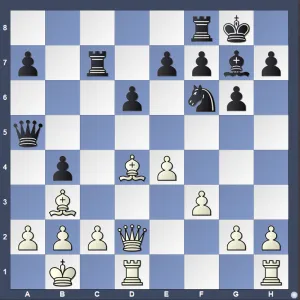
17.h4 Qb5 18.h5 Rfc8 It was too risky to take the pawn. After 18…Nxh5 the h-file gets opened anyways. 19.Bxg7 Kxg7 20.g4 Nf6 21.Qh6+ Kg8 22.g5 Nh5 23.Rxh5 gxh5 24.g6, White checkmates easily. A similar idea worked in the game.
19.hxg6 hxg6 The h-file is opened, but there are many defenders around Black’s king. Fischer uses the g-pawn to get rid of them. 20.g4 a5 21.g5 Nh5
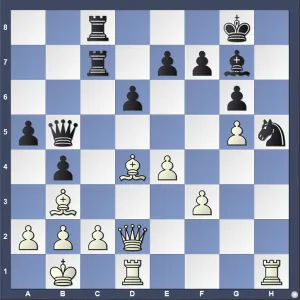
22.Rxh5! Always be ready to sacrifice to keep the attack going! 22…gxh5 23.g6, and White soon won.
Attacking Chess – Same-Side Castling
When both sides castle the same side, the attacks rarely involve pawn storming. The reason is that pushing pawns in front of your king can backfire. Still, there are some situations where pawn storms work well. Usually, it happens when the center is firmly closed or when the fianchettoed bishop shields the king. Both factors often happen to be present on the board in the King’s Indian types of position.
Let’s look at a very recent example.
Sergey Karjakin (2757) – Samuel Shankland (2709)
FIDE World Cup 2021 Krasnaya Polyana (Sochi) RUS (6.2), 29.07.2021
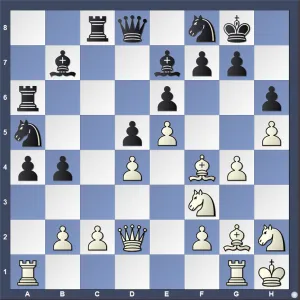
22.g5! Opening up the g-file. As you can see, White’s king looks absolutely safe, although there are no pawns in front of it. This is mainly because the center is closed.
22…Nc4 23.Qc1 hxg5 24.Bxg5 b3 25.Bxe7 Qxe7 26.Bf1 a3 26…f5 could be more stubborn.
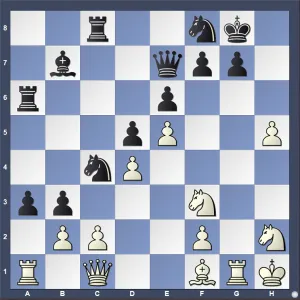
27.Rxg7+! Kxg7 28.Ng4 Now Qh6+ followed Nf6+ are the deadly threats. White soon won.
With same-side castled kings, the more common scenario is when pieces attack the king. It often involves sacrifices aimed to destroy the king’s pawn cover. Most of such combinations are well-known, for example, the Greek Gift. It is useful to learn these common patterns, so you never miss them in your games.
Alexander Alekhine – Karoly Sterk
Budapest Invitation Masters Budapest (4), 09.09.1921
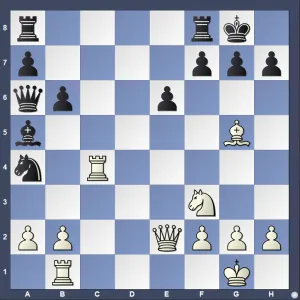
23.Bf6 White starts the frontal attack on Black’s king position. Interesting variation could happen after 23…h5 when White was ready to sacrifice a queen. 24.Rg4! Qxe2 25.Rxg7+ Kh8 26.Ng5 and Black gets checkmated after Rg7–h7–h8.
In the game, Black played 23…Rfc8, you can see the rest in the PGN-viewer below.
As you could see, one of the keys to a successful attack is open files. Pieces need them to reach the enemy king. The other important thing is the elimination of defenders.
The attack can’t be successful if the opponent’s king is well protected. We also saw a lot of sacrifices in the games above.
It is one of the main tools one can use to open files or get rid of the defenders. Last, let’s mention the importance of time. The attack must be energetic, so search for active continuations and don’t make unnecessary moves.
Ready to take your attacking chess to expert’s level and beyond?
https://thechessworld.com/store/product/attacking-play-secrets-with-im-bence-szabo/



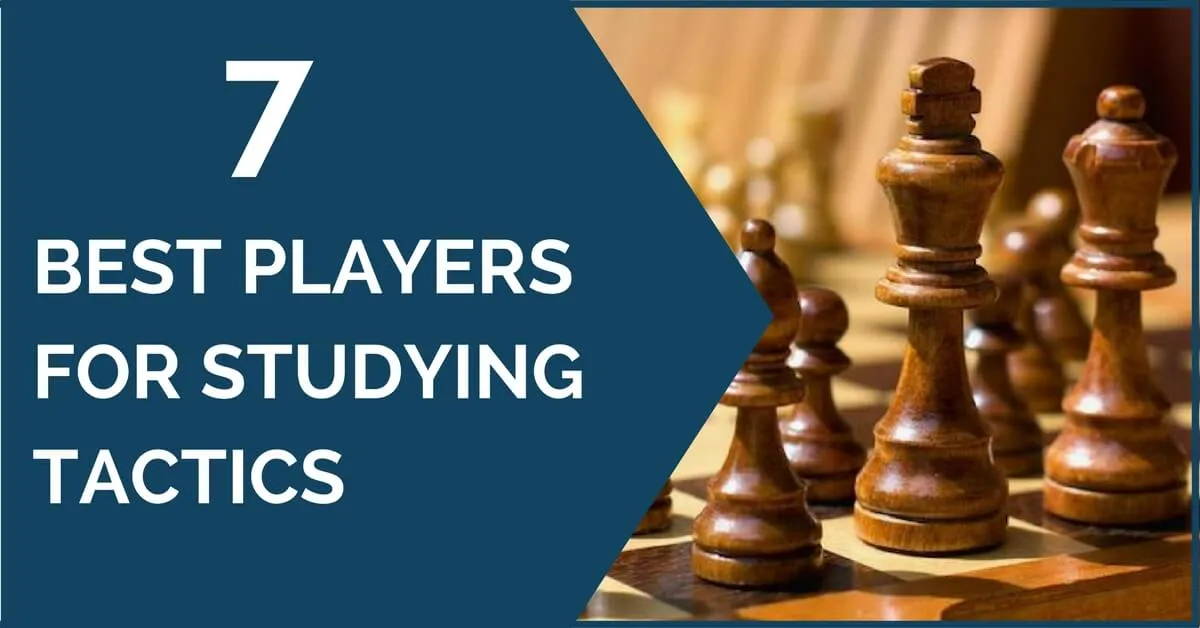
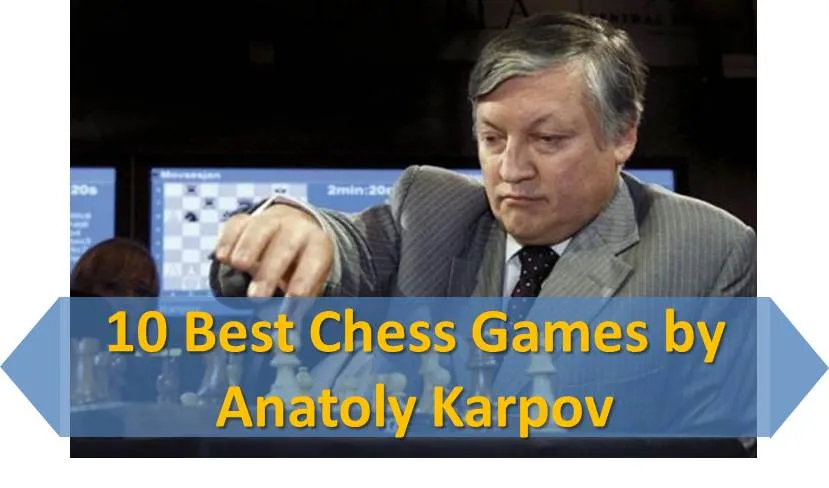
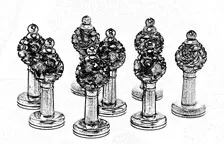




Comments: